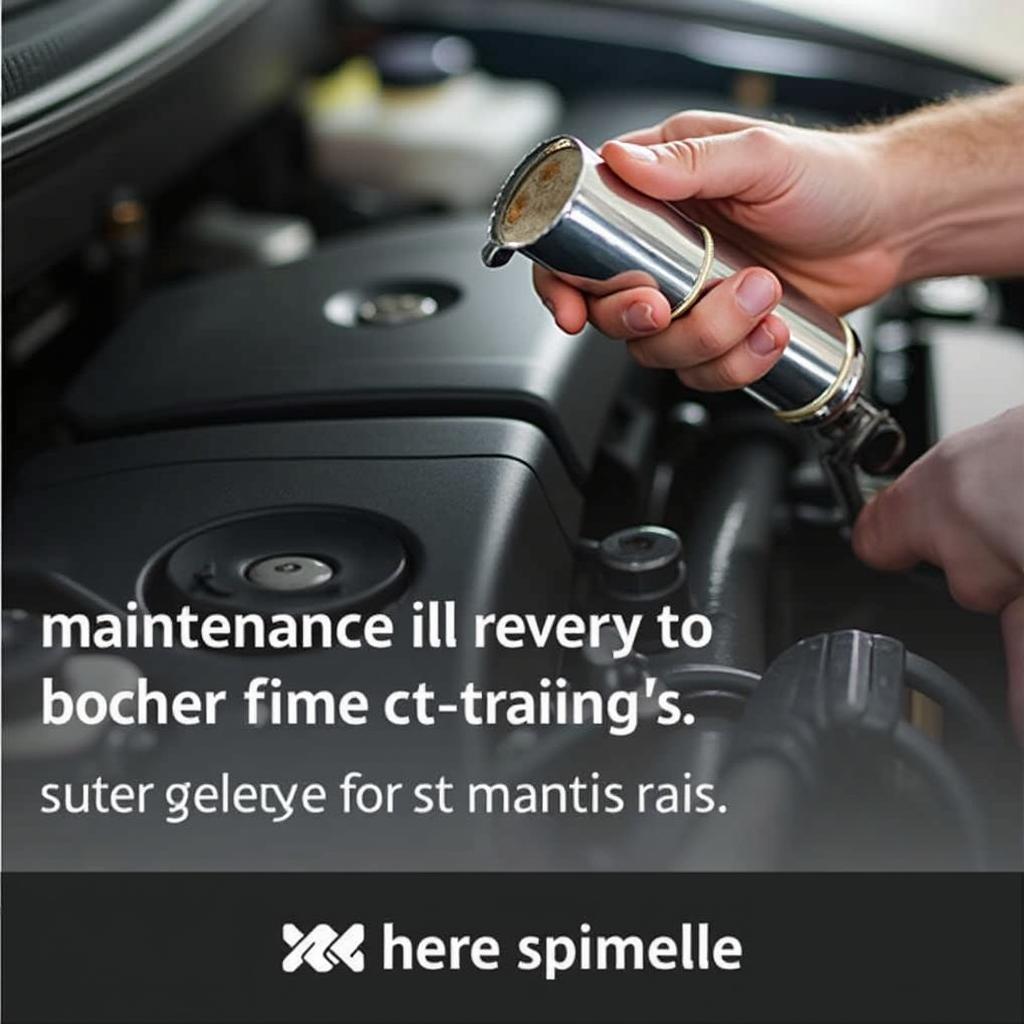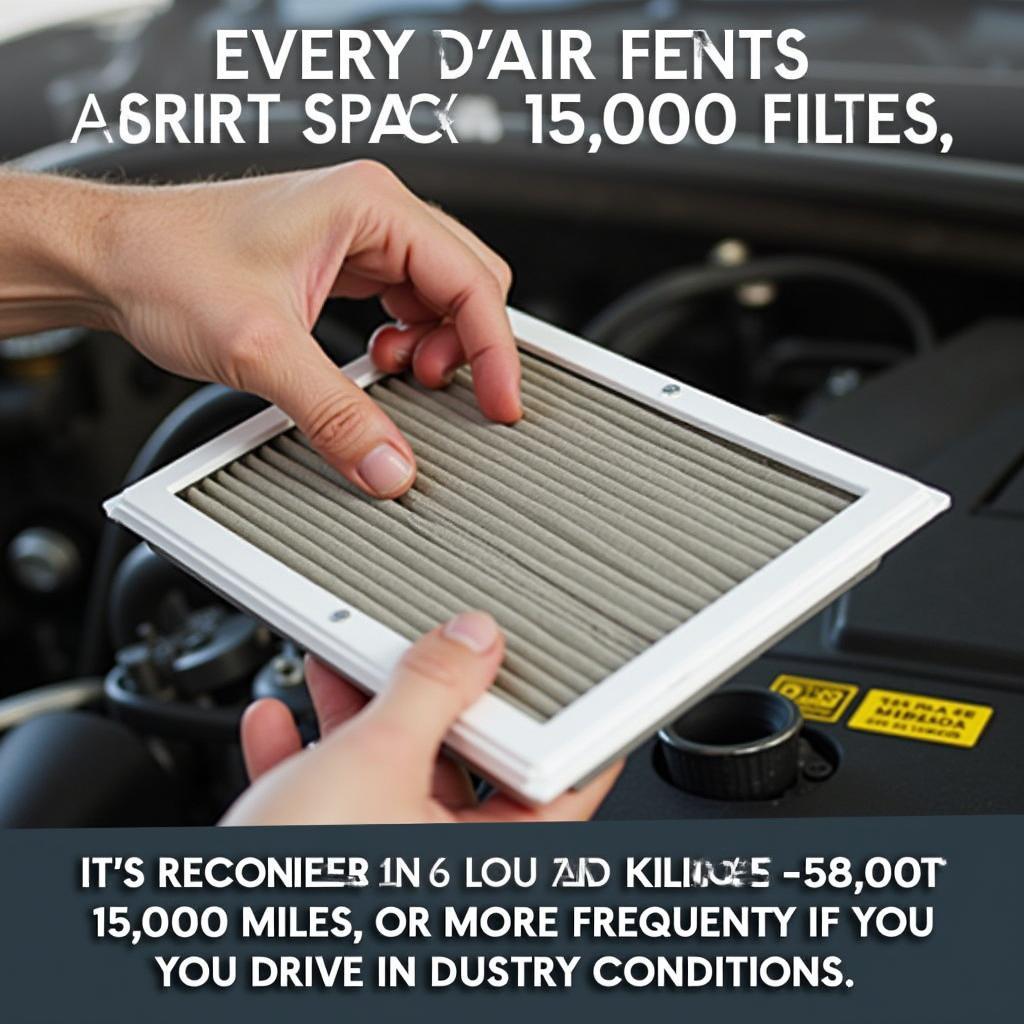Regular car maintenance is essential to ensure your vehicle runs smoothly, safely, and efficiently. It helps prevent unexpected breakdowns, reduces repair costs, and improves fuel economy. This comprehensive guide will walk you through essential maintenance tasks, frequency, and tips for keeping your car in top shape.
Understanding the Importance of Car Maintenance
Imagine driving down the road, enjoying the open highway, when suddenly your car sputters to a stop. You’re stranded, late for a meeting, and have no idea what went wrong. This is a scenario that can be avoided with regular maintenance.
Just like your body needs regular check-ups to stay healthy, your car needs routine maintenance to keep it performing at its best. This includes checking fluids, changing oil, replacing filters, and inspecting crucial parts.
“Regular maintenance is the key to a long and happy relationship with your car,” says John Smith, a certified automotive technician with over 20 years of experience. “It’s like a preventative measure, just like going to the doctor for a checkup.”
Essential Maintenance Tasks: A Checklist
Here are some of the most essential car maintenance tasks you should perform regularly:
1. Oil Change: The Lifeblood of Your Engine
The oil in your engine lubricates moving parts, reducing friction and wear. It also helps cool the engine and remove debris.  Changing your car’s oil Over time, oil degrades and loses its effectiveness. A timely oil change is crucial for optimal engine performance and longevity.
Changing your car’s oil Over time, oil degrades and loses its effectiveness. A timely oil change is crucial for optimal engine performance and longevity.
2. Air Filter: Breathing Easy
The air filter cleans the air that enters your engine, protecting it from dust, dirt, and other contaminants. A dirty air filter restricts airflow, reducing engine power and fuel efficiency.  Inspecting the air filter
Inspecting the air filter
3. Spark Plugs: Igniting the Fire
Spark plugs ignite the air-fuel mixture in your engine, allowing it to run smoothly. Worn-out spark plugs can cause misfires, poor fuel economy, and even damage to your engine.  Replacing worn-out spark plugs
Replacing worn-out spark plugs
4. Brake Pads and Rotors: Stopping Power
Brake pads and rotors work together to stop your car. Worn-out brake pads can cause squeaking or grinding noises and reduced braking performance.  Inspecting brake pads and rotors
Inspecting brake pads and rotors
5. Coolant: Keeping Things Cool
Coolant helps regulate the temperature of your engine, preventing it from overheating.  Checking the coolant level Low coolant levels can lead to engine damage, so it’s important to keep it topped up.
Checking the coolant level Low coolant levels can lead to engine damage, so it’s important to keep it topped up.
6. Battery: Powering Up
Your car battery provides the power to start the engine and operate electrical components.  Replacing a car battery
Replacing a car battery
How Often Should I Perform Car Maintenance?
The frequency of car maintenance varies depending on several factors, including:
- Driving conditions: Driving in harsh environments (e.g., dusty roads, extreme temperatures) requires more frequent maintenance.
- Driving habits: Frequent stop-and-go driving puts more stress on your car’s components, requiring more frequent maintenance.
- Vehicle age and mileage: Older cars and cars with higher mileage require more frequent maintenance.
It’s always best to consult your owner’s manual for specific maintenance schedules for your car.
Car Maintenance Costs: A Breakdown
Car maintenance costs can vary depending on the type of maintenance, parts, and labor costs.
Here’s a general breakdown of typical costs:
- Oil Change: $30-50
- Air Filter Replacement: $10-20
- Spark Plug Replacement: $50-100
- Brake Pad Replacement: $100-200
- Coolant Flush: $100-150
- Battery Replacement: $100-200
These costs can vary significantly depending on your location and the type of car you own.
DIY vs. Professional Car Maintenance: Which is Right for You?
Performing basic car maintenance tasks yourself can save money and provide a sense of accomplishment. However, some tasks require specialized tools and knowledge, making it best to leave them to professionals.
Here’s a breakdown of which tasks are suitable for DIY and which require professional expertise:
DIY Maintenance:
- Oil Change: A relatively simple task that can be done with basic tools.
- Air Filter Replacement: A quick and straightforward procedure.
- Checking Fluid Levels: Essential for monitoring your car’s health.
- Tire Pressure Check: Ensuring optimal tire performance and safety.
Professional Maintenance:
- Brake Pad Replacement: Requires specialized tools and knowledge to ensure safe braking.
- Spark Plug Replacement: May involve specialized tools and knowledge.
- Coolant Flush: A complex procedure that requires specialized equipment and expertise.
- Battery Replacement: Can involve proper disposal and handling of the old battery.
If you’re unsure about a particular task, it’s always best to consult with a professional mechanic.
Car Maintenance: A Comprehensive Guide:
Regular car maintenance is a crucial aspect of responsible car ownership. It helps ensure your vehicle runs smoothly, safely, and efficiently. This guide has provided you with a comprehensive understanding of essential maintenance tasks, frequency, and tips for keeping your car in top shape. Remember to consult your owner’s manual for specific maintenance schedules and to seek professional help when needed.
**For further assistance or any questions about car maintenance, contact us at AutoTipPro:
Phone: +1 (641) 206-8880
Office: 500 N St Mary’s St, San Antonio, TX 78205, United States
FAQ
Q: What are some signs that my car needs maintenance?
A: Some common signs include:
- Check engine light illuminated
- Unusual noises, such as squealing, grinding, or knocking
- Reduced engine power or acceleration
- Poor fuel economy
- Leaking fluids
- Difficulty starting the engine
Q: How often should I have my car inspected by a mechanic?
A: It’s generally recommended to have your car inspected by a mechanic at least once a year, or every 12,000 miles, whichever comes first.
Q: What is the best way to keep track of my car’s maintenance?
A: You can use a maintenance log, a smartphone app, or a digital spreadsheet to keep track of your car’s maintenance schedule and records.
Q: What are some tips for saving money on car maintenance?
A: Some tips include:
- Performing basic maintenance tasks yourself.
- Shopping around for the best prices on parts and labor.
- Keeping your car in good condition to prevent major repairs.
- Negotiating with your mechanic for discounts.
Q: What are some common car maintenance mistakes to avoid?
A: Some common mistakes include:
- Ignoring warning lights.
- Delaying necessary maintenance.
- Using the wrong type of fluids.
- Neglecting to check tire pressure.
By following these tips and guidelines, you can ensure your car stays in top condition and save money in the long run. Remember, a well-maintained car is a safe car and a happy car.





Leave a Reply